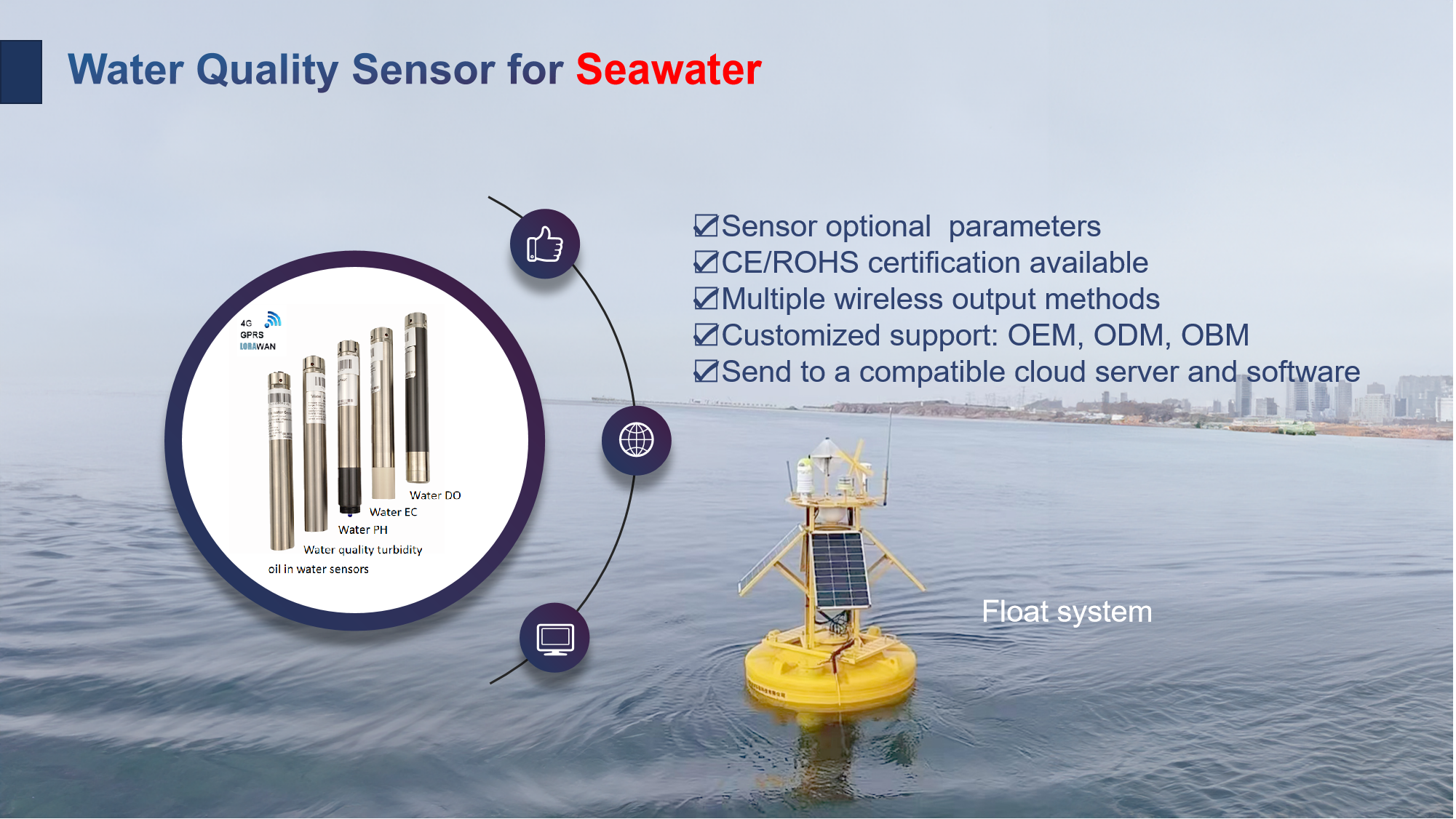As global attention on water resource protection and water security intensifies, water quality sensors have become a cornerstone of data collection, with their applications deeply embedded across various environmental monitoring scenarios. The following international case studies illustrate how these sensors play a critical role in different contexts.
Case 1: United States – Real-Time Water Quality Monitoring Network in the Delaware River Basin
Background:
The Delaware River Basin provides drinking water to approximately 15 million people in the northeastern United States, making its water quality management and flood control critically important.
Application & Solution:
The basin’s management authority established a real-time water quality monitoring network covering the entire watershed. Multi-parameter water quality sensors are deployed at key points in the rivers, reservoirs, and intakes, continuously measuring:
- Physical Parameters: Water temperature, turbidity, conductivity
- Chemical Parameters: Dissolved oxygen, pH, nitrate concentration
These sensors transmit data to a central control center in real-time via satellite or cellular networks. If an anomaly is detected (e.g., a sharp spike in turbidity from a storm or a potential contamination event), the system triggers an immediate alert.
Outcomes:
- Safeguards Drinking Water: Water treatment plants can be forewarned of changes in source water quality, allowing them to adjust treatment processes promptly.
- Aids Flood and Pollution Warning: Provides real-time data for flood models and enables rapid identification of pollution sources, shortening emergency response times.
- Supports Ecosystem Research: Long-term, continuous data provides valuable information for studying the impact of climate change and human activities on the watershed ecology.
Case 2: European Union – Nutrient Sensor Monitoring and Agricultural Management in the Seine Estuary
Background:
In Europe, particularly in member states bound by the Water Framework Directive, controlling agricultural non-point source pollution (e.g., nitrogen and phosphorus nutrients) is a central challenge for improving water quality. The Seine estuary in France is one such area.
Application & Solution:
Local environmental agencies deployed high-precision nitrate sensors in the estuary and its main tributaries. These sensors are not only used for post-facto monitoring but are integrated with agricultural activity data to create a precision agriculture management feedback system.
- The sensors continuously monitor nitrate concentrations, mapping their temporal and spatial variations.
- The data is provided to local agricultural cooperatives and farmers, clearly showing the actual impact of different farming practices and fertilizer application timing on downstream water quality.
Outcomes:
- Promotes Precision Agriculture: Farmers can optimize the timing and amount of fertilizer based on monitoring data, reducing nutrient runoff at the source while maintaining yields and fulfilling environmental responsibilities.
- Evaluates Policy Effectiveness: This monitoring network provides quantitative evidence for assessing the environmental benefits of the EU’s Common Agricultural Policy.
Case 3: Singapore – Comprehensive Sensing in the Urban Water System under the Smart Nation Framework
Background:
As a model “Smart Nation,” Singapore has fully integrated sensor technology across its entire water loop, including NEWater production, potable water distribution, and wastewater treatment.
Application & Solution:
- Reservoirs & Water Sources: Multi-parameter water quality sensors and biosensors (e.g., using live fish for toxicity monitoring) are used for 24/7 uninterrupted monitoring to ensure source water safety.
- Water Distribution Network: A vast network of sensors is deployed throughout the urban water supply pipes, monitoring key indicators like residual chlorine, pH, and turbidity in real-time. If an anomaly is detected or residual chlorine is insufficient, the system can automatically adjust chlorination doses or quickly locate potential contamination points, ensuring water safety at the “last mile.”
- Wastewater Treatment Plants: Online sensors for ammonia nitrogen, nitrate, and COD (Chemical Oxygen Demand) optimize aeration and sludge treatment processes, significantly improving efficiency and reducing energy consumption.
Outcomes:
- Enables Closed-Loop Management: Data-driven management from “tap to tap” ensures world-class water supply safety and efficiency.
- Enhances Operational Efficiency: Sensor data shifts the operation of water facilities from experience-based to predictive and optimized, saving operational costs.
Case 4: Japan – Long-Term Sensor Monitoring and Research of Lake Ecosystems
Background:
Japan is home to many important lakes, such as Lake Biwa, whose ecosystem health is a major concern. Preventing eutrophication and cyanobacterial blooms is a key management focus.
Application & Solution:
Research institutions and management bodies deploy vertical profiling monitoring buoys in the lakes. These buoys are equipped with water quality sensors that measure at different depths:
- Chlorophyll-a concentration (directly indicating algal biomass)
- Phycocyanin (specific to blue-green algae)
- Dissolved Oxygen (used to determine water stratification and anoxic conditions)
- Water Temperature
These buoys collect data over the long term at high frequencies, building dynamic models of the lake ecosystem, often combined with satellite remote sensing.
Outcomes:
- Accurate Algal Bloom Prediction: Continuous monitoring of chlorophyll-a and phycocyanin allows for the prediction of algal blooms several days in advance, providing crucial time for managers to implement countermeasures.
- Deepens Ecological Understanding: Long-term, high-resolution data provides an irreplaceable scientific basis for understanding how lake ecosystems respond to climate change.
Conclusion
From large-scale watershed management in the U.S. to agricultural pollution control in the E.U., and from urban smart water systems in Singapore to lake ecosystem research in Japan, these international cases clearly demonstrate that water quality sensors have evolved beyond simple data collection tools. They are now core assets for achieving precise environmental management, ensuring public safety, advancing scientific research, and improving infrastructure operational efficiency. As IoT and AI technologies continue to develop, the global application of water quality sensors will undoubtedly become even more profound and intelligent.
We can also provide a variety of solutions for
1. Handheld meter for multi-parameter water quality
2. Floating Buoy system for multi-parameter water quality
3. Automatic cleaning brush for multi-parameter water sensor
4. Complete set of servers and software wireless module, supports RS485 GPRS /4g/WIFI/LORA/LORAWAN
For more water sensor information,
please contact Honde Technology Co., LTD.
Email: info@hondetech.com
Company website: www.hondetechco.com
Tel: +86-15210548582
Post time: Oct-09-2025


